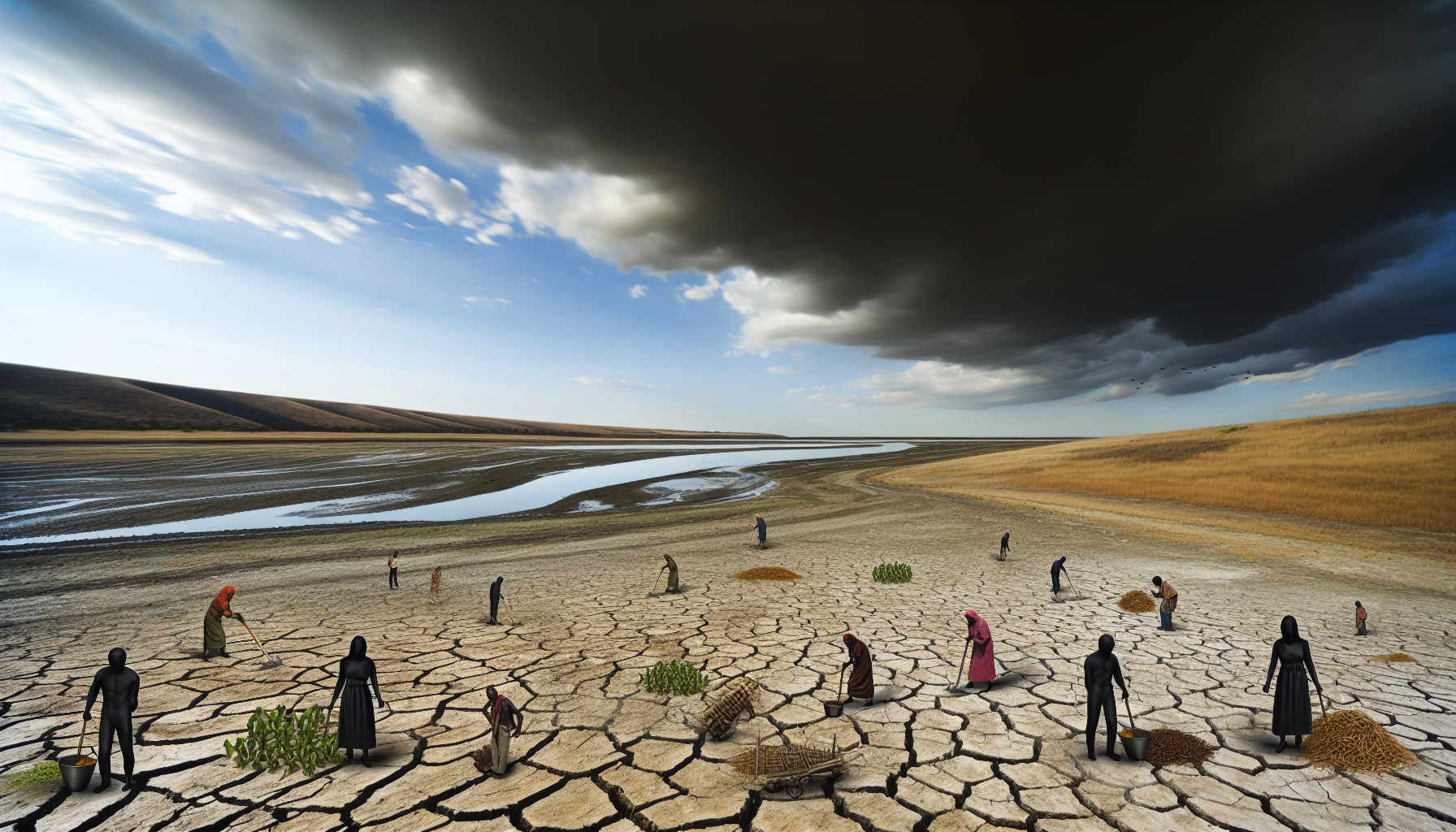In a world where flowing rivers were once the arteries of our civilizations, today we follow the Ghost Streams, poignant reminders of the ebbing lifeblood of a society now long past. Our journey unveils landscapes of forsaken watercourses, the stark illustrations of climate catastrophe, and the eerie stillness where the ripples once sang.
Along the parched riverbanks, where moist earth and verdant foliage persisted against all odds, a barren desolation has taken hold. Here, water once danced, it shaped lands, civilizations, and destinies. Now, only lamenting winds navigate through the cracked soils where waves should be.
In the remnants of what were once lush deltas, failing crops tell the tale of the human struggle against the planet’s retaliatory wrath. Agricultural communities, now dust bowl societies, cling to the spectral memories of harvests they can no longer reap, forming modern fables of missed opportunities in stewardship and conservation. The frail, haunting shadows of children playing by a stream, which is no more, highlights the void left by water’s retreat from civilization.
Our exploration takes us to regions where the echoes of water’s laughter are stifled by stark silence. Following the desiccated channels to their former sources, we find ourselves at the withering heights of glaciers, whispering their final goodbyes as they surrender the last of their icy reserves. These are the same glaciers that birthed rivers, once teeming with life, now lifeless—monuments to the robust ecosystems they supported.
The profound impact of these vanishing waterways unfolds in the tales of the displaced—fishermen without fish; farmers without fields. Ghost streams, indeed, pave the way for evolving ecological migrants traveling in search of sustenance, shelter, and a semblance of the life that once was.
And yet, the ghost streams are not void of activity. They become ironic playgrounds, surreal art installations where the remnants of consumerism—plastic bottles, rusted cars, desolate factories—emerge as relics partially swallowed by the land.
With the catharsis of this dystopian tableau, society unknowingly curates its own history museum—one in which the exhibits are the consequences of its actions, and the patrons are those left to ponder the downfall. We witness a chilling observance of respect among the ruins, where a river was once worshipped, and now memories pay homage to what was taken for granted.
With this narrative, we do not aim to kindle hope; the Ghost Streams serve as a stark testament to a future that cannot reclaim its past. As a chronicler of cautionary tales, we peel back the layers of neglect that brought us to this precipice.
Yet, even here, in the solemnity of loss, an undercurrent of human persistence remains. Communities adapt with a grim resourcefulness, forging life in desolate places. Some conjure water from the thin air while others delve deep into the earth, chasing after the aquifers that elude many.
The message of the Ghost Streams is eerily clear—a civilization in decline, cascading towards an environmental abyss, with humanity mourning the loss of its ancient, aqueous ally. Admittedly, our visceral reaction to these vast expanses of nothingness is paradoxically one of overwhelming fullness—a fullness of regret, of missed chances, and of reflection on what the world has become.
In the end, the Ghost Streams are not just water’s retreat from civilization; they are a metaphor for environmental atrophy, a cautionary punctuation in our narrative of existence, begging the question of what legacy we choose to leave for those who will walk the dried riverbeds in our stead.
